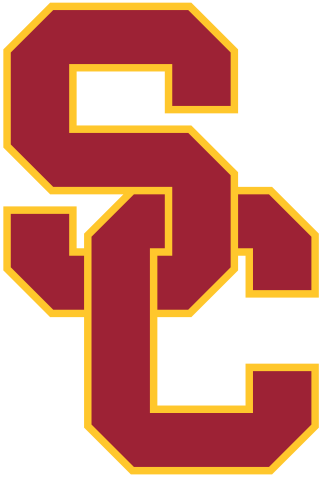| No. 3 | |||||||||||||||||
|---|---|---|---|---|---|---|---|---|---|---|---|---|---|---|---|---|---|
| Position: | Fullback [1] | ||||||||||||||||
| Personal information | |||||||||||||||||
| Born: | October 25, 1895 Franklin, Tennessee, U.S. | ||||||||||||||||
| Died: | March 4, 1950 (aged 54) Reno, Nevada, U.S. | ||||||||||||||||
| Height: | 6 ft 1 in (1.85 m) | ||||||||||||||||
| Weight: | 205 lb (93 kg) | ||||||||||||||||
| Career information | |||||||||||||||||
| College: | West Virginia | ||||||||||||||||
| Career history | |||||||||||||||||
Andrew V. "Rip" King [2] (October 25, 1895 – March 4, 1950) was a professional American football player who played as fullback for six seasons for the Akron Pros, Chicago Cardinals, and Hammond Pros of the National Football League (NFL). He played college football at West Virginia University. In March 1950, King died of a self-inflicted gunshot wound, [3] at the age of 54. Related Research Articles Elroy Leon "Crazylegs" Hirsch was an American professional football player, sport executive and actor. He was inducted into the Pro Football Hall of Fame in 1967 and the College Football Hall of Fame in 1974. He was also named to the all-time All-Pro team selected in 1968 and to the National Football League (NFL) 1950s All-Decade Team.  Morris Hiram "Red" Badgro was an American professional football and baseball player. He played as an end in the National Football League (NFL). He was inducted into the Pro Football Hall of Fame in 1981.  Melvin Jack Hein, nicknamed "Old Indestructible", was an American professional football player. In the era of one-platoon football, he played as a center and was inducted into the College Football Hall of Fame in 1954 and the Pro Football Hall of Fame in 1963 as part of the first class of inductees. He was also named to the National Football League (NFL) 75th, and 100th Anniversary All-Time Teams.  Robert Stanton Waterfield was an American professional football player and coach. A skilled player, he played in the National Football League (NFL) for eight seasons, primarily as a quarterback, but also as a safety, kicker, punter and sometimes return specialist with the Cleveland / Los Angeles Rams. He played college football for the UCLA Bruins. He was inducted into the Pro Football Hall of Fame in 1965. His No. 7 jersey was retired by the Rams in 1952. He was also a motion picture actor and producer.  George Edward Trafton was an American professional football player and coach, boxer, boxing manager, and gymnasium proprietor. He was inducted into the Pro Football Hall of Fame in 1964 and was also selected in 1969 as the center on the NFL 1920s All-Decade Team.  Joseph Lee Stydahar nicknamed "Jumbo Joe", was an American professional football player and coach. He was inducted into the Pro Football Hall of Fame in 1967 and the College Football Hall of Fame in 1972.  William James Wade Jr., often referred to during his playing career as Billy Wade, was an American football quarterback who played in the National Football League (NFL) for the Los Angeles Rams (1954-1960) and Chicago Bears (1961-1966). LaVern Earl "Torgy" Torgeson was an American football player and coach. He played college football for Washington State from 1948 through 1950. Torgeson played professionally in the National Football League (NFL) for seven seasons, principally as a linebacker, for the Detroit Lions from 1951 to 1954 and for the Washington Redskins from 1955 to 1957. Carl Kenneth "Moose" Mulleneaux was an American football player and coach. He played professionally as an end in the National Football League (NFL) for six seasons with the Green Bay Packers, from 1938 to 1941 and 1945 to 1946). He was inducted into the Green Bay Packers Hall of Fame in 1983. Mulleneaux's brother Lee Mulleneaux also played briefly for the Packers. The 1991 East Carolina Pirates football team represented East Carolina University in the 1991 NCAA Division I-A football season. The Pirates offense scored 409 points while the defense allowed 277 points. Led by head coach Bill Lewis, the Pirates won the Peach Bowl defeating in-state rival NC State.  The 1978 USC Trojans football team represented the University of Southern California in the 1978 NCAA Division I-A football season. Following the season, the Trojans were crowned national champions according to the Coaches Poll. While Alabama claimed the AP Poll title because it had defeated top-ranked Penn State in the Sugar Bowl, the Trojans felt they deserved the title since they had defeated Alabama and Notre Dame during the regular season, and then Michigan in the Rose Bowl. Both USC and Alabama ended their seasons with a single loss. The 1978 Stanford Cardinals football team represented Stanford University in the Pacific-10 Conference during the 1978 NCAA Division I-A football season. Led by second-year head coach Bill Walsh, the Cardinals were 7–4 in the regular season and played their home games on campus at Stanford Stadium in Stanford, California. Their four losses were by a combined total of sixteen points.  The 1940 National Football League (NFL) All-Star Game was an exhibition contest that the NFL organized after the 1939 season. The game was played between the Green Bay Packers, the league's champion that season, and a team of All-Stars made up of players from the remaining NFL teams. The players on the All-Star team were selected by a national poll of fans. The game, which was delayed a week due to rain, was played on Sunday, January 14, 1940, at Gilmore Stadium in Los Angeles, California, in front of approximately 18,000 fans. The Packers defeated the All-Stars by a score of 16–7 on three field goals and a 92-yard touchdown pass from Cecil Isbell to Don Hutson. The all-star game format was continued for another three seasons before ending due to World War II. A new all-star format, branded as the Pro Bowl, began after the 1950 NFL season, with these all-star games retroactively considered the first Pro Bowls.  James W. Powers was an American football player and coach. He played professionally as a quarterback, defensive back and linebacker in the National Football League (NFL) with the San Francisco 49ers from 1950 to 1953. He played college football for at the University of Southern California (USC). Powers served as the head football coach at Santa Monica City College—now known as Santa Monica College—in Santa Monica, California from 1956 to 1971. His 1958 Santa Monica Corsairs football team compiled a 10–0 record and defeated Northeastern Oklahoma A&M in the Junior Rose Bowl. The 1963 Los Angeles State Diablos football team represented Los Angeles State College—now known as California State University, Los Angeles—as a member of the California Collegiate Athletic Association (CCAA) during the 1963 NCAA College Division football season. Led by first-year head coach Homer Beatty, Los Angeles State compiled an overall record of 7–1 with a mark of 3–1 in conference play, sharing the CCAA title with San Diego State. The Diablos played home games at the Rose Bowl in Pasadena, California. The 1949 Fresno State Bulldogs football team represented Fresno State College—now known as California State University, Fresno—as a member of the California Collegiate Athletic Association (CCAA) during the 1949 college football season. The team was led by head coach Alvin Pierson in his second one-year stint in the position. He had previously been head coach in 1945. The Bulldogs played home games at Ratcliffe Stadium on the campus of Fresno City College in Fresno, California. They finished the season with a record of three wins and eight losses. The Bulldogs were outscored 156–344 for the season.  The 1980 Oklahoma State Cowboys football team represented Oklahoma State University in the Big Eight Conference during the 1980 NCAA Division I-A football season. In their second season under head coach Jimmy Johnson, the Cowboys compiled a 3–7–1 record, tied for fourth place in the conference, and were outscored by opponents by a combined total of 268 to 187. The 1981 Wyoming Cowboys football team represented the University of Wyoming in the 1981 NCAA Division I-A football season. Led by first-year head coach Al Kincaid, the Cowboys compiled an 8-3 record, and finished fourth in the WAC. The Cowboys played their home games at War Memorial Stadium in Laramie, Wyoming. The 1950 Kent State Golden Flashes football team was an American football team that represented Kent State University in the Ohio Athletic Conference (OAC) during the 1950 college football season. In its fifth season under head coach Trevor J. Rees, Kent State compiled a 5–4 record. The season marked the opening of Memorial Stadium, which was built around the field where the team had been playing since 1941. References
This page is based on this Wikipedia article Text is available under the CC BY-SA 4.0 license; additional terms may apply. Images, videos and audio are available under their respective licenses. | |||||||||||||||||